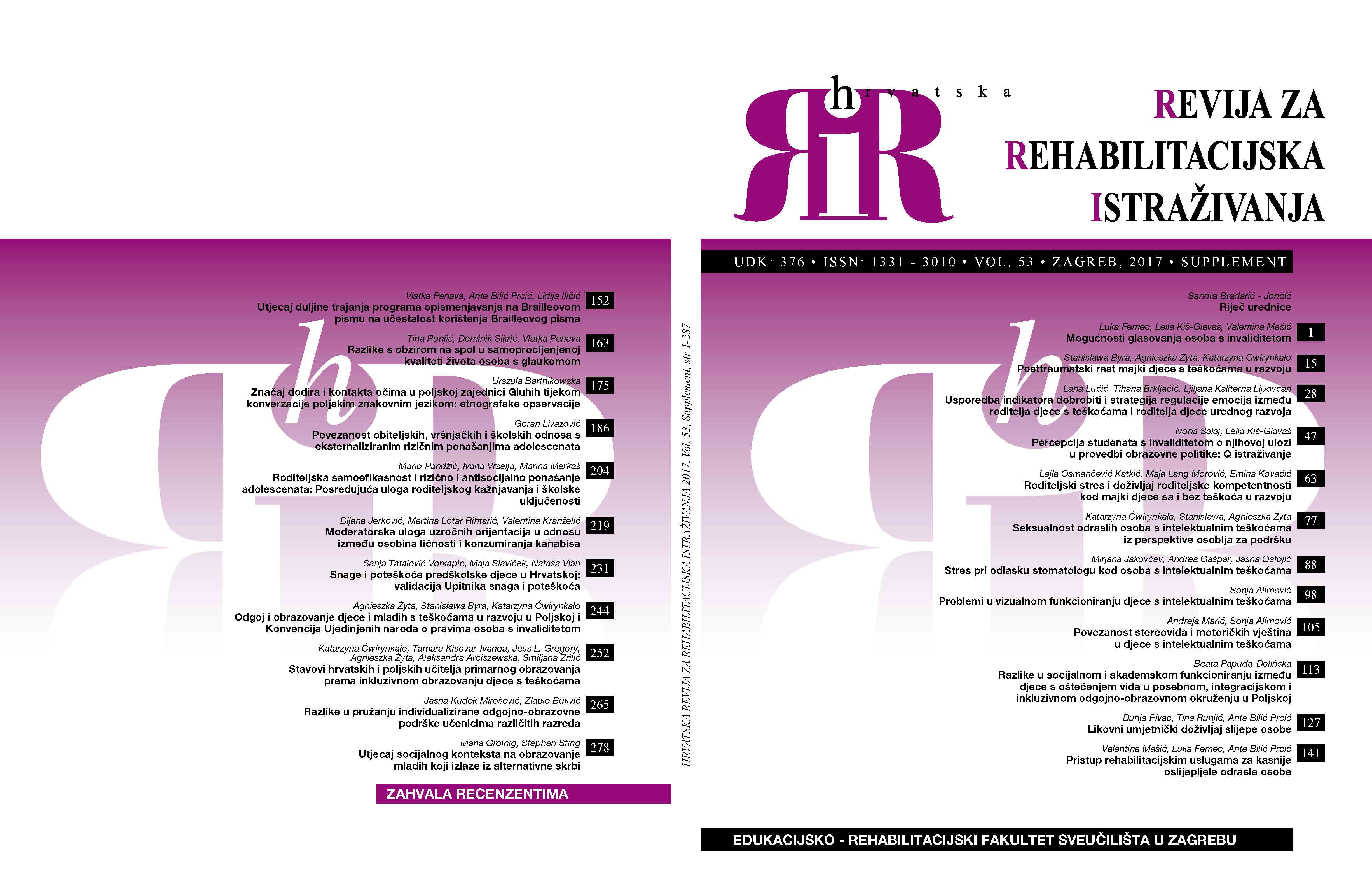Percepcija studenata s invaliditetom o njihovoj ulozi u provedbi obrazovne politike: Q istraživanje
Perceptions of students with disabilities regarding their role in the implementation of education policy: a Q method study
Author(s): Ivona Salaj, Lelia Kiš-GlavašSubject(s): Social Sciences, Higher Education , Educational Psychology, Inclusive Education / Inclusion
Published by: Sveučilište u Zagrebu, Edukacijsko-rehabilitacijski fakultet
Keywords: Q methodology; users’ perspectives; students with disabilities; higher education; implementation;
Summary/Abstract: This study examined perceptions of students with disabilities (SWD) regarding their role in the implementation of education policy. We used Q methodology to understand students’ position and their impact on the implementation of education policy. This is the first Q study on this issue in Croatia; therefore, the purpose of this study is to promote and familiarise Croatian researchers with Q methodology. British physicist psychologist William Stephenson developed Q methodology in 1935. Q is an appropriate choice for the study of issues that are socially contested, and it can be effectively accomplished with small numbers of participants. Hence, the use of Q becomes relevant for this study. The study was carried out at the University of Zagreb in spring 2016. The study sample consisted of 15 SWD (8 females and 7 males); it included students with motor impairment, sight and hearing impairment, specific learning disability, and multiple disabilities. Participation was free and voluntary, and the selected participants were representative of the stakeholder groups. We provided SWD with Q-sort statements (called a Q-sample) as a research tool. The Q-sample consisted of 35 statements, each written on a separate card. During Q sorting, 15 SWD presented their perspectives about their role in the implementation of educational policy by ranking statements from strongly disagree (-4) to strongly agree (+4) into a normalised distribution single-centred around no opinion (0). This set of ranked statements, each done by a different participant, constitutes the Q-sort. The data were analysed using the software program PQMethod 2.35. The use of centroid factor analysis with varimax rotation produced three factors related to what is essential for strengthening the role of students in the implementation of education policy. In addition, the study concluded that Q could be a useful tool for productive stakeholder involvement to facilitate policy implementation decisions.
Journal: Hrvatska revija za rehabilitacijska istraživanja
- Issue Year: 53/2017
- Issue No: Supp.
- Page Range: 47-62
- Page Count: 16
- Language: English

